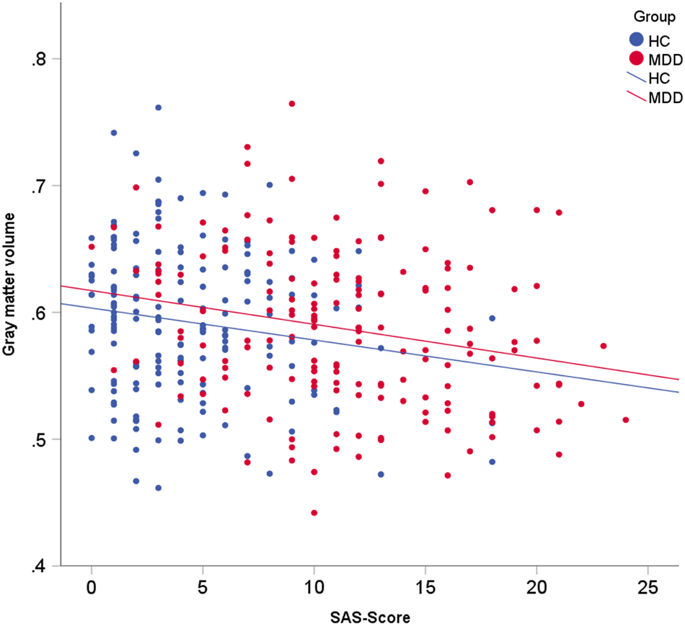当前位置:
X-MOL 学术
›
Neuropsychopharmacology
›
论文详情
Our official English website, www.x-mol.net, welcomes your
feedback! (Note: you will need to create a separate account there.)
Social anhedonia in major depressive disorder: a symptom-specific neuroimaging approach.
Neuropsychopharmacology ( IF 6.6 ) Pub Date : 2018-11-27 , DOI: 10.1038/s41386-018-0283-6 Verena Enneking 1 , Pia Krüssel 1 , Dario Zaremba 1 , Katharina Dohm 1 , Dominik Grotegerd 1 , Katharina Förster 1 , Susanne Meinert 1 , Christian Bürger 1 , Fanni Dzvonyar 1 , Elisabeth J Leehr 1 , Joscha Böhnlein 1 , Jonathan Repple 1 , Nils Opel 1 , Nils R Winter 1 , Tim Hahn 1 , Ronny Redlich 1 , Udo Dannlowski 1
Neuropsychopharmacology ( IF 6.6 ) Pub Date : 2018-11-27 , DOI: 10.1038/s41386-018-0283-6 Verena Enneking 1 , Pia Krüssel 1 , Dario Zaremba 1 , Katharina Dohm 1 , Dominik Grotegerd 1 , Katharina Förster 1 , Susanne Meinert 1 , Christian Bürger 1 , Fanni Dzvonyar 1 , Elisabeth J Leehr 1 , Joscha Böhnlein 1 , Jonathan Repple 1 , Nils Opel 1 , Nils R Winter 1 , Tim Hahn 1 , Ronny Redlich 1 , Udo Dannlowski 1
Affiliation

|
While research concerning brain structural biomarkers of major depressive disorder (MDD) is continuously progressing, our state of knowledge regarding biomarkers of specific clinical profiles of MDD is still limited. The aim of the present study was to investigate brain structural correlates of social anhedonia as a cardinal symptom of MDD. In a cross-sectional study, we investigated n = 166 patients with MDD and n = 166 matched healthy controls (HC) using structural magnetic resonance imaging (MRI). Social anhedonia was assessed using the Chapman Scales for Social Anhedonia (SAS). An anhedonia x group ANCOVA was performed in a region of interest approach of the dorsal and ventral striatum (bilateral caudate nucleus, putamen, nucleus accumbens respectively) as well as on whole-brain level. The analyses revealed a significant main effect for social anhedonia: higher SAS-scores were associated with reduced gray matter volume in the bilateral caudate nucleus in both the MDD-group (pFWE = 0.002) and the HC-group (pFWE = 0.032). The whole-brain analysis confirmed this association (left: pFWE = 0.036, right: pFWE = 0.047). There was no significant main effect of group and no significant anhedonia x group interaction effect. This is the first study providing evidence for volumetric aberrations in the reward system related to social anhedonia independently of diagnosis, depression severity, medication status, and former course of disease. These results support the hypothesis that social anhedonia has a brain biomarker serving as a possible endophenotype of depression and possibly providing an alternative approach for a more precise and effective treatment.
中文翻译:

重度抑郁症中的社交快感缺失:一种症状特异性神经影像学方法。
虽然关于重度抑郁症 (MDD) 的脑结构生物标志物的研究不断取得进展,但我们对 MDD 特定临床特征的生物标志物的了解仍然有限。本研究的目的是调查作为 MDD 主要症状的社交快感缺乏的大脑结构相关性。在一项横断面研究中,我们使用结构磁共振成像 (MRI) 调查了 n = 166 名 MDD 患者和 n = 166 名匹配的健康对照 (HC)。使用查普曼社交快感缺失量表 (SAS) 评估社交快感缺失。在背侧和腹侧纹状体(分别为双侧尾状核、壳核、伏隔核)以及全脑水平的感兴趣区域方法中进行快感缺乏 x 组 ANCOVA。分析揭示了社交快感缺失的显着主要影响:较高的 SAS 分数与 MDD 组(pFWE = 0.002)和 HC 组(pFWE = 0.032)双侧尾状核灰质体积减少相关。全脑分析证实了这种关联(左图:pFWE = 0.036,右图:pFWE = 0.047)。没有显着的组主效应,也没有显着的快感缺失 x 组相互作用效应。这是第一项为与社交快感缺乏相关的奖励系统体积畸变提供证据的研究,独立于诊断、抑郁严重程度、药物治疗状况和既往病程。
更新日期:2019-01-26
中文翻译:

重度抑郁症中的社交快感缺失:一种症状特异性神经影像学方法。
虽然关于重度抑郁症 (MDD) 的脑结构生物标志物的研究不断取得进展,但我们对 MDD 特定临床特征的生物标志物的了解仍然有限。本研究的目的是调查作为 MDD 主要症状的社交快感缺乏的大脑结构相关性。在一项横断面研究中,我们使用结构磁共振成像 (MRI) 调查了 n = 166 名 MDD 患者和 n = 166 名匹配的健康对照 (HC)。使用查普曼社交快感缺失量表 (SAS) 评估社交快感缺失。在背侧和腹侧纹状体(分别为双侧尾状核、壳核、伏隔核)以及全脑水平的感兴趣区域方法中进行快感缺乏 x 组 ANCOVA。分析揭示了社交快感缺失的显着主要影响:较高的 SAS 分数与 MDD 组(pFWE = 0.002)和 HC 组(pFWE = 0.032)双侧尾状核灰质体积减少相关。全脑分析证实了这种关联(左图:pFWE = 0.036,右图:pFWE = 0.047)。没有显着的组主效应,也没有显着的快感缺失 x 组相互作用效应。这是第一项为与社交快感缺乏相关的奖励系统体积畸变提供证据的研究,独立于诊断、抑郁严重程度、药物治疗状况和既往病程。









































 京公网安备 11010802027423号
京公网安备 11010802027423号